When a copy is better than the original. How supergenerics
save the world
save the world
The development of new drugs costs an arm and a leg. Pharmacists have come up with an idea how to treat people cheaper and at the same time effectively
The growth in the production of generic drugs is a trend in the global pharmaceutical market.
The share of generics in the global pharmaceutical manufacturing market exceeds 50%, in Ukraine – about 85%. It is anticipated that the number of generic drugs will be growing. They are cheaper and more affordable for consumers than their brand-name counterparts, while they are in no way inferior in quality and efficacy. The phenomenon of the so-called "patent cliff" is fared by the development of the trend.
How generic drugs are changing the industry, improving people's quality of life.
How generic drugs are changing the industry, improving people's quality of life.
How new drugs are designed
To develop innovative drugs, or, as pharmacists say, new molecules, huge investments are required, namely, financial, time and intellectual.
In many countries, the pharmaceutical industry is a leader in added value and investments in research and development. Enterprises spend about 15% of net sales for these goals. To put that in context, IT companies spend 10% of their income on software development.
It costs USD 4 billion to design one molecule, and as for the time, along with all the necessary research, it can take more than ten years.
The expenses are constantly growing: in 1980, USD 1 billion of investments resulted in 17 new drugs, in 2014 – in only two. Therefore, the company that has launched an effective, fundamentally new drug on the market files a patent for it and sets its price in order to recoup the money invested in the development.
It is the complexity and duration of the process of designing the molecule that determines the final cost, which can reach several thousand dollars per dose of the drug. The patent is most often valid for 20+5 years, then other manufacturers get the opportunity to reproduce the drug. The subsequent copies are called generics.
It is the complexity and duration of the process of designing the molecule that determines the final cost, which can reach several thousand dollars per dose of the drug. The patent is most often valid for 20+5 years, then other manufacturers get the opportunity to reproduce the drug. The subsequent copies are called generics.
How generics are created
The launch of generics into the market is a less expensive process that does not require the repetition of all preclinical and clinical trials. According to ARK Invest, USD 4-8 million and 3-5 years are needed to design a generic drug. Companies use ready-made formulae, reproduce the active ingredient and develop the appropriate dosage form which is often a complex composition of inactive ingredients that allows the active ingredient to cause in the patient's body the same effect as the original drug.
Of course, there is an opinion in society that a copy of something is always worse than the original. Regulators in developed countries have long tried to popularize the use of generics as the most rational model of consumption, in which all layers of the society, not just the rich, have access to modern treatment.
The United States systematically stimulate the launch of generics into the market. In 2018, generics saved the budget USD 20 billion.
State reimbursement programs mainly provide generic drugs, which allows saving budget money and providing all patients with necessary medicines. For example, the United States systematically stimulate the launch of generics into the market. They calculated that in 2018, generics saved the budget USD 20 billion.
Quality control
It is fundamentally important for the quality of generics to comply with the original drug not only in terms of the active ingredient, but also bioequivalence, which means that the drug has an identical therapeutic effect, safety profile and tolerability.
The same active ingredient does not always guarantee that the drug will cause the same effect. It is important that the same dose of the active ingredient reaches the target organ in the patient's body. If 50 mg of the copy product acts as 10 mg of the reference, then the duration of treatment and its final cost will be different. Such a "copy" certainly cannot be considered a generic.
The same active ingredient does not always guarantee that the drug will cause the same effect. It is important that the same dose of the active ingredient reaches the target organ in the patient's body. If 50 mg of the copy product acts as 10 mg of the reference, then the duration of treatment and its final cost will be different. Such a "copy" certainly cannot be considered a generic.
There can be several reasons for a "failed copy". If the synthesis of the active ingredient of a particular drug by the end of the patent is fairly well studied, the selection of inactive ingredients that are contained in any drug can be a daunting task. The speed of release of the active ingredient in the human body, and therefore, its effect, depends on inactive ingredients. In addition, raw materials from different suppliers may differ in the presence of impurities, which may also affect the final result. Among other factors are the standards of the factory where the analogue is reproduced, the packaging used, and the storage conditions.
When choosing a generic drug, you should not be guided solely by its price. The reputation of the manufacturer and the compliance of the production with the international GMP standard are important here
Therefore, when choosing a generic drug, you should not be guided solely by its price. The reputation of the manufacturer and the compliance of the production with the international GMP standard (Good Manufacturing Practice) are important here. This is one of the main standards in the pharmaceutical world, known for its rigid requirements for each stage of production.
In Ukraine, major pharmaceutical market players are GMP certified. Compliance with the GMP standard must be regularly verified. Only in 2016-2018, nine Ukrainian companies received this certificate from the EU countries. Among them are "Darnitsa", "Farmak", Borshchahivskiy Chemical-Pharmaceutical Plant, "Technologist", "Yuria-Pharm", "Sinbias Pharma" and "Ukrvetprompostach". Such companies will not stand the hazard of their reputation: when purchasing raw materials, they will make sure that they are produced under appropriate conditions and, for their part, will ensure the production process and quality control to keep pace with modern advances. For example, "Darnitsa" purchases raw materials all over the world – in Europe, Asia, and the USA. But the main criterion is the manufacturer's GMP certificate availability, moreover, "Darnitsa" audits its suppliers by itself.
In Ukraine, major pharmaceutical market players are GMP certified. Compliance with the GMP standard must be regularly verified. Only in 2016-2018, nine Ukrainian companies received this certificate from the EU countries. Among them are "Darnitsa", "Farmak", Borshchahivskiy Chemical-Pharmaceutical Plant, "Technologist", "Yuria-Pharm", "Sinbias Pharma" and "Ukrvetprompostach". Such companies will not stand the hazard of their reputation: when purchasing raw materials, they will make sure that they are produced under appropriate conditions and, for their part, will ensure the production process and quality control to keep pace with modern advances. For example, "Darnitsa" purchases raw materials all over the world – in Europe, Asia, and the USA. But the main criterion is the manufacturer's GMP certificate availability, moreover, "Darnitsa" audits its suppliers by itself.
What kind of generics exists
Modern generics in the broad sense are not only traditional drugs with one pharmaceutical ingredient, but also complex ones containing more than one active ingredient, or complex generics, as well as the analogues of innovative biotechnological drugs – biosimilars.
A popular headache remedy – "Citramon MAXI" – is considered an example of a complex generic. It contains three active pharmaceutical ingredients: acetylsalicylic acid, paracetamol and caffeine. Another example is the cardiac product "Tiara Trio" from "Darnitsa", an analogue of the "Exforge HCT" of the multinational company "Sandoz".
Its peculiarity is a combination of three active ingredients, which allows patients with hypertension to take one medicine instead of three separate ones and thus increases patient adherence to treatment and the effectiveness of therapy.
"We conducted bioequivalence studies and obtained pharmacokinetics profiles matching at the level of 99-100%, which almost exactly matches the "golden mean" of the acceptable range established by the regulatory body. This is also evident on the pharmacokinetic curves, that is, on the graphs that show the body's assimilation of the active ingredients of the drug", says clinical trial expert Andrii Doroshenko about "Tiara Trio".
A popular headache remedy – "Citramon MAXI" – is considered an example of a complex generic. It contains three active pharmaceutical ingredients: acetylsalicylic acid, paracetamol and caffeine. Another example is the cardiac product "Tiara Trio" from "Darnitsa", an analogue of the "Exforge HCT" of the multinational company "Sandoz".
Its peculiarity is a combination of three active ingredients, which allows patients with hypertension to take one medicine instead of three separate ones and thus increases patient adherence to treatment and the effectiveness of therapy.
"We conducted bioequivalence studies and obtained pharmacokinetics profiles matching at the level of 99-100%, which almost exactly matches the "golden mean" of the acceptable range established by the regulatory body. This is also evident on the pharmacokinetic curves, that is, on the graphs that show the body's assimilation of the active ingredients of the drug", says clinical trial expert Andrii Doroshenko about "Tiara Trio".
Biosimilars are even more complex. Although they do not require the expenses for developing the molecule, they involve approximately the same scientific, technical and manufacture base as the original. It does not work just copying the molecule, as in the case of chemotherapy drugs, and the resulting medicine in any case will be similar, but not identical to the original.
Bioanalogues include, but are not limited to, insulin, vaccines, and most innovative cancer drugs. The synthesis of active ingredients in this case mainly occurs in living organisms, for example, bacterial cells. It is very difficult to launch the production of a bioanalogue. The market of biosimilars in the world is just emerging. For now, these drugs appear single-piece in the most developed countries.
Bioanalogues include, but are not limited to, insulin, vaccines, and most innovative cancer drugs. The synthesis of active ingredients in this case mainly occurs in living organisms, for example, bacterial cells. It is very difficult to launch the production of a bioanalogue. The market of biosimilars in the world is just emerging. For now, these drugs appear single-piece in the most developed countries.
The launch of new technologies over the years of the patent for a particular pharmaceutical "blockbuster" allows not only to accurately reproduce it, but often even improve it. Such "advanced" versions are called supergenerics
These are analogues that are superior in pharmacokinetics to reference drugs, offer the best way to deliver the active ingredient to the affected organ, or produce fewer side effects. Moreover, their development does not cost enormously: it is 3-6 years and USD 10-50 million.
Supergenerics are another argument in favour of analogues and an example of the fact that a copy can exceed the original, both in price and in quality and effectiveness of treatment.
Supergenerics are another argument in favour of analogues and an example of the fact that a copy can exceed the original, both in price and in quality and effectiveness of treatment.
Opportunities for "patent cliff"
pharmaceutical "blockbusters" are coming to an end at a large scale. This phenomenon is referred to as "patent cliff". It opens up enormous opportunities for generic companies. This is especially true for emerging markets such as Ukrainian, whose growth is almost entirely due to the production of generics.
In nominal terms, according to Evaluate, it is anticipated that if in 2018 global sales of generics amounted to USD 84 billion, then in 2019 they are expected to be USD 89 billion, and in 2020 – USD 95 billion.

Dmytro Shymkiv
Head of the Board of Directors of Darnitsa Group
"Darnitsa" relies on complex generics because they give patients with different income levels access to quality treatment. This is the innovative approach. The first mobile phones were uncomfortable "bricks" and cost thousands of dollars.
"Now these are pocket gadgets or watches which everyone can afford. We cannot say that Apple, Samsung or Xiaomi simply copied the old invention, can we? The same is with generics: their availability is already an innovation".

Yurii Lebid
"Farmaxi" Director
"Patent cliff" opens up additional opportunities for the Ukrainian pharmaceutical market. Will domestic pharmaceutical manufacturers be able to take advantage of these opportunities? Among the advantages of local manufacturers there is good technical equipment and many years of experience and skills in the production of generic drugs. In some cases, even a full-fledged technology transfer took place, and this indicates real opportunities to build complex production processes in accordance with international standards.
"But there are some problems. They are associated with the use of various patent term extension technologies to obtain "evergreen" protection. Difficulties also relate to a more complex structure of modern drugs, namely biopharmaceutical products (vaccines, recombinant proteins, monoclonal antibodies, etc.) Time will tell if large Ukrainian manufacturers can cope with the challenges. Or maybe in the future we will see the reverse process: western companies are looking forward to the day when they can make their generic on the basis of the Ukrainian innovative drug".

Volodymyr Lomiichuk
СЕО SalesCapital AG Ukraine
For Ukrainian companies, the "patent cliff" can be a real "stairways to Heaven". A high technological level and a sufficient base of professional personnel gives our pharmaceutical manufacturers the opportunity to quickly copy the original formula and enter the market with their generics. The same can help them to "evergreen" patents of leading world manufacturers and reach a fundamentally new level.
"Naturally, manufacturers of unique drugs do their best to extend the term of their patents. What does it mean for a company that wants to create a generic? First of all, it needs to keep track of the term of their patents for exclusive drugs and be prepared for the moment of "patent cliff". Then the company can try to negotiate with the owner of the original patent for the production of generics. But the situation in which the generic manufacturer will be able to "evergreen" the patent, i.e., to improve the drug so as to become the owner of an exclusive patent of a new formula, will be much more beneficial".

